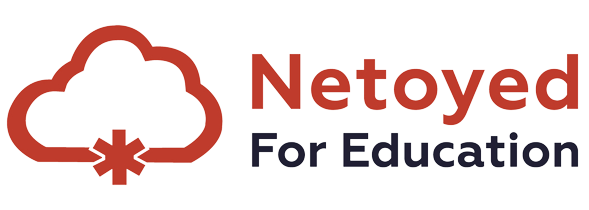In the digital age, schools are no longer just places of chalkboards and textbooks. Technology now powers nearly every aspect of education, from attendance tracking and grade reports to virtual classrooms and e-learning platforms. While this shift has opened up exciting opportunities for both teachers and students, it has also made educational institutions more vulnerable to one of the most pressing risks of our time i.e., data loss.
Cyberattacks, hardware failures, human errors, and natural disasters can cause data loss that disrupts learning, compromises sensitive information, and erodes parents’ and the community’s trust. That is why having a robust school data backup and recovery plan is not just a technical best practice but a fundamental requirement.
1. Protecting Academic Continuity
Imagine a scenario where your school’s servers crash in the middle of term, wiping out weeks of lesson plans, student assignments, and exam schedules. Teachers are forced to rebuild materials from scratch, students lose valuable work, and the learning process is brought to a standstill without a reliable backup system in place.
Additionally, a well-designed school data backup and recovery plan quickly restores academic resources and allows classes to resume with minimal disruption. This means teachers can focus on teaching, not troubleshooting, and students can continue learning without losing precious time.
2. Safeguarding Sensitive Information
Schools are custodians of sensitive data such as student records, medical information, staff details, and financial transactions. A breach or loss of such data does not just lead to operational setbacks; it can have legal implications and damage the school’s reputation.
A secure backup solution, especially one that uses encrypted cloud storage, adds a crucial layer of protection. Even if primary systems are compromised, critical information remains safe, recoverable, and accessible only to authorized personnel.
3. Mitigating the Impact of Cyber Threats
Ransomware attacks are no longer confined to large corporations. Above all, schools are targeted by cybercriminals who encrypt valuable data and demand payment for its release. Without backups, institutions often face the painful choice of paying the ransom or losing critical information.
An effective school data backup and recovery plan cuts ransomware attackers’ leverage, letting schools restore clean, secure copies of data without negotiating with criminals and stay resilient against such threats.
4. Preparing for the Unpredictable
From sudden power outages to floods and fires, unexpected events can strike without warning. For schools in regions prone to extreme weather, this risk is even higher. A comprehensive backup plan ensures that, regardless of the disruption, we can quickly restore our essential systems.
The best strategies combine both onsite and offsite backups, providing redundancy and peace of mind. Maintain local copies to enable quick restoration and use cloud backups to keep data safe even if premises are compromised.
5. Supporting Remote and Hybrid Learning Models
The pandemic has shown that the ability to switch between in-person, hybrid, and fully remote learning is no longer optional. In such flexible learning environments, having access to stored digital content, assignments, and administrative systems is essential.
A structured backup plan ensures that no matter where teachers or students are located, they can securely access the resources they need. It also allows schools to adapt quickly to changing circumstances without sacrificing educational quality.
6. Reducing Downtime and Operational Costs
When systems fail and data is lost, the downtime can be costly not just in terms of repair expenses but also in lost productivity. Teachers waiting for lesson materials, administrators unable to process forms, and IT teams scrambling for solutions all contribute to operational inefficiency.
Automated, scheduled backups significantly reduce the recovery time after a disruption. Restoring data quickly saves schools time and money, allowing them to direct resources toward improving the learning experience instead.
7. Building Trust with Parents and Stakeholders
Parents entrust schools with their children’s education and personal data. Strong systems that protect this trust actively demonstrate the institution’s unwavering commitment to security, preparedness, and professionalism.
Establishing a transparent school data backup and recovery plan, shared with staff and relevant stakeholders, reassures the community that the school is proactive in protecting both academic and administrative integrity.
Implementing a Strong School Data Backup and Recovery Plan
Creating an effective plan does not have to be overwhelming. It starts with assessing the school’s specific needs and existing infrastructure. Here are key considerations:
- Identify Critical Data – Pinpoint the files, applications, and systems that are essential for daily operations.
- Use Multiple Backup Methods – Combine local backups for speed with secure cloud solutions for redundancy.
- Automate the Process – Schedule backups to run regularly without manual intervention.
- Test Restorations – It is a crucial step to ensure data can be recovered successfully.
- Ensure Accessibility – Authorized staff should be able to retrieve data quickly when needed, from any location.
- Train Staff – Educators and administrators should understand the importance of backups and the basics of recovery.
By prioritizing these steps, schools can create a safety net that protects against data loss, minimizes downtime, and supports uninterrupted learning.
The Bottom Line
In today’s connected educational environment, a data backup and recovery plan are no longer a nice-to-have. All in all, It is a cornerstone of effective school management. It protects the institution’s most valuable assets, ensures learning continues without major disruptions, and reinforces trust among parents, staff, and the wider community.
A reliable backup system actively protects against significant financial and reputational losses, making the initial investment a powerful tool for preparedness. For schools that aim to thrive in a digital-first world, the question is not whether to invest in a backup plan, but how soon they can put one in place.




 1st Floor, H-31, Sector 63,
1st Floor, H-31, Sector 63,